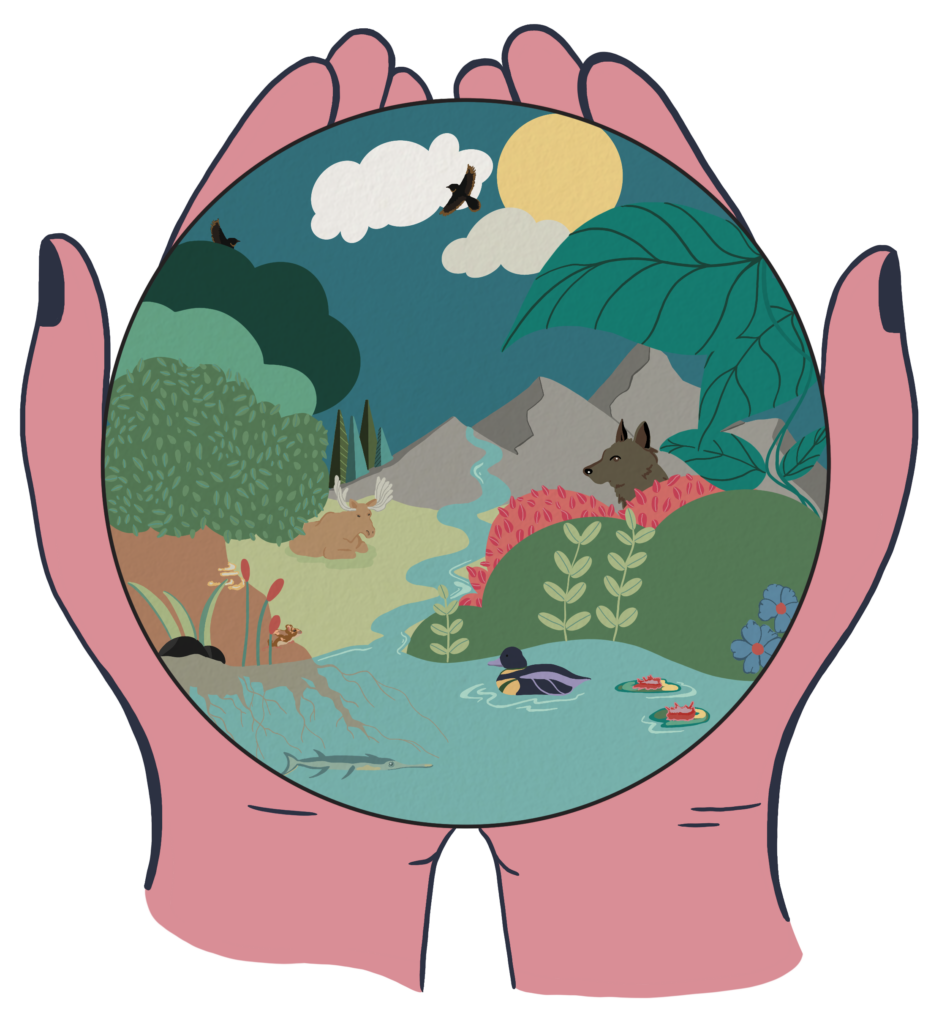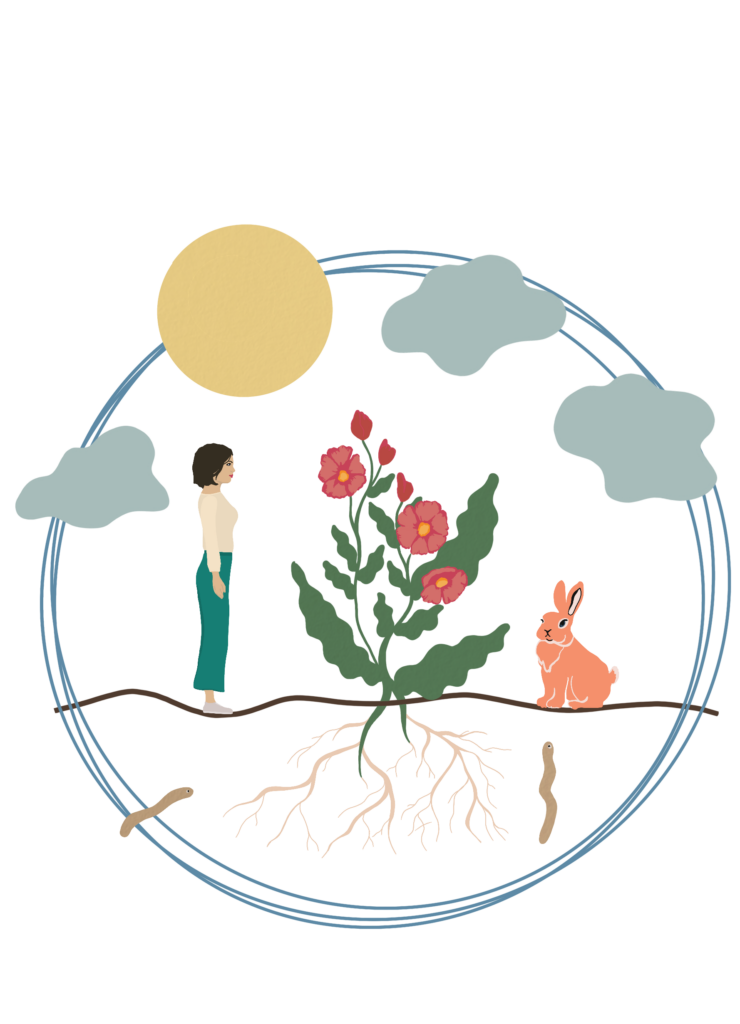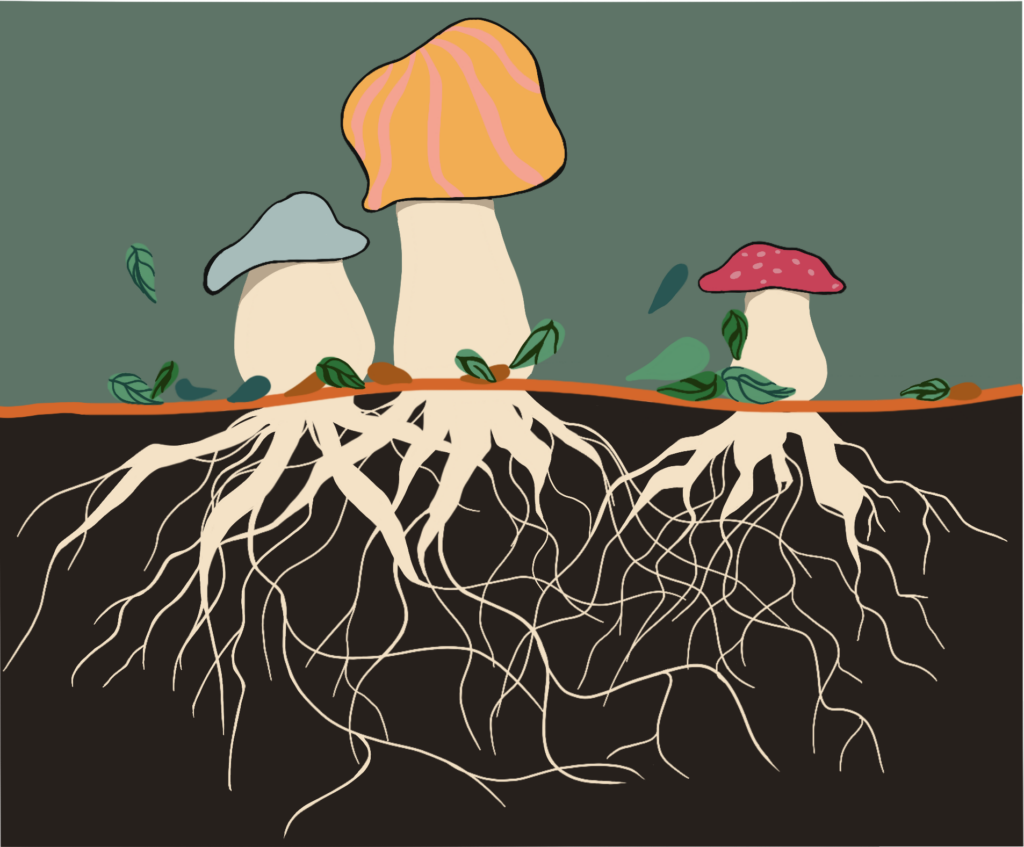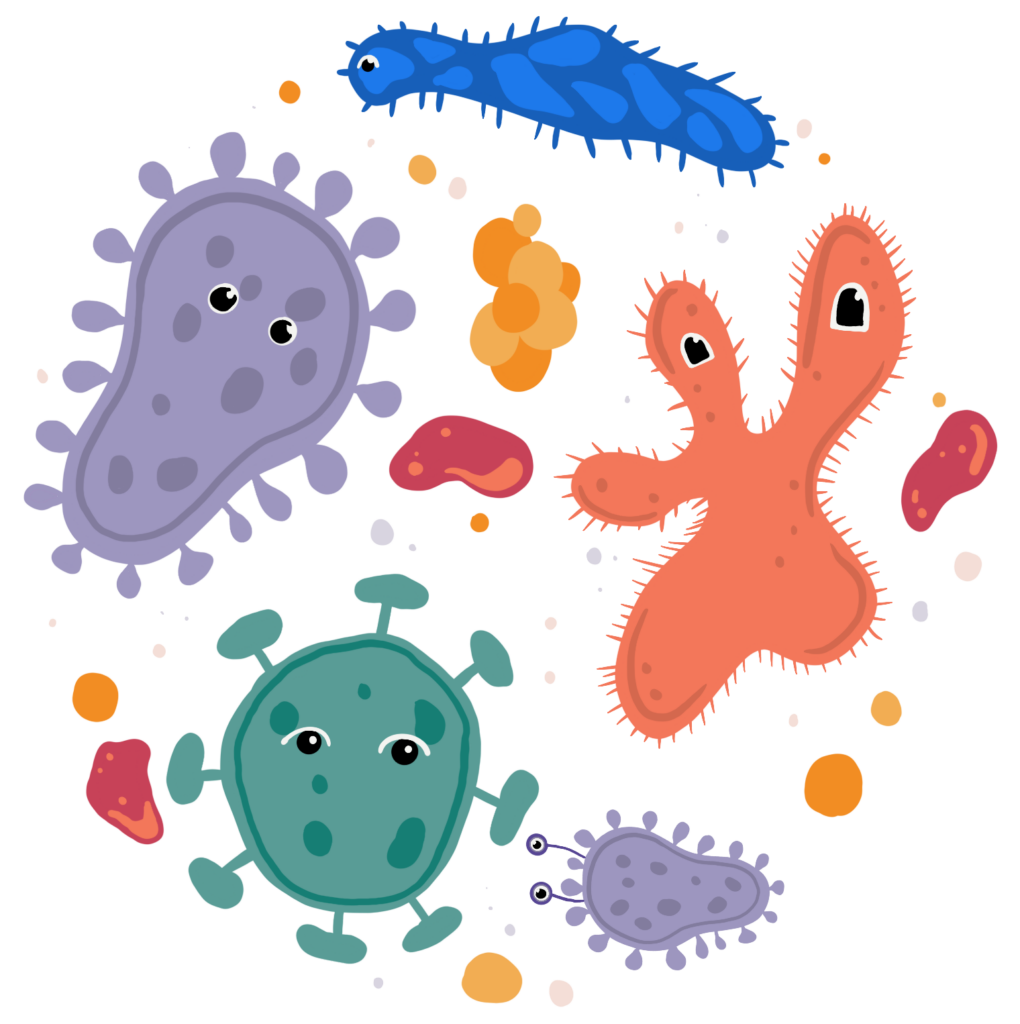The biosphere is the part of the Earth where all life exists. It includes all ecosystems and living organisms in the atmosphere, lithosphere and hydrosphere. The biosphere is a complex and interconnected network of biological life that interact and influence each other. Each ecosystem has decomposers (scavengers, fungi, bacteria). We link energy flow from the sun to green plants and onto consumers (animals) and decomposers in food chains [1]. An ecosystem consists of several short or long chains forming a food web.

The entire biosphere is like a huge global ecosystem where countless ecosystems exist at various levels [2]. For example, the forest has its ecosystem, as do trees, mosses, ants, and humans, each with its own small ecosystem. The lake is an ecosystem divided into smaller parts such as seaweed, fish, frogs, etc. The garden has an ecosystem with different components, such as shrubs, grasses, beetles, and worms. Even ecosystems exist inside and on different organisms, such as your skin. Each ecosystem has unique food chains and webs, allowing the transfer of energy and nutrients between organisms. This interplay between all life is fascinating.
The word biosphere comes from the Greek bios = life and sphaira = sphere or ball.
BIOLOGY – THE SCIENCE OF LIFE
Life in the biosphere is roughly divided into domains: bacteria, archaea and eukaryotes. These, in turn, include countless subcategories such as animals, plants, fungi, microorganisms and all the various bacteria, archaea and protists. They all live in ecosystems where they depend on and influence each other.

PLANTS
Green plants, including green algae, play an important role. Solar energy is the primary source of vitality for green plants, which use solar energy to convert carbon dioxide and water into sugar (glucose) and oxygen through chlorophyll and photosynthesis. Animals and microorganisms then use the sugar as a source of energy [3]. The fact that green plants’ photosynthesis releases oxygen and consumes carbon dioxide further consolidates their central role in most of the Earth’s ecosystems and their positive impact on the climate.
The study of plants is called botany.
ANIMALS
There are different types of animals, each with their own place in all the spheres of life, such as birds in the atmosphere, worms in the lithosphere and fish in the hydrosphere. The animals on and inside the ground also have different subdivisions, and if you want to read more, check out the Life in the ground ![]() or Species facts
or Species facts ![]()
Animals depend on the energy that green plants capture by harnessing sunlight through photosynthesis. This energy then travels up food chains as larger life forms eat smaller ones in the biosphere.
The study of animals is called zoology and maybe that’s why many people talk about humans as if they were outside the animal kingdom… but humans are also animals and part of the biosphere.
Fungi are a group of their own and are more closely related to animals than plants [4]. There are mushrooms everywhere in different guises, although we usually associate mushrooms with the ones we pick in the forest and eat. But fungi are everywhere, including in decaying leaves and the roots of trees, known as mycorrhiza. The mushrooms we see are only the fruiting body and are only a tiny part of the fungi. They are made up of millions of thread-like cells called hyphae.

The hyphae grow like tiny threads in the soil. One gram of soil can contain 100 metres of these microscopic hyphae. The hyphae usually build up a network called a mycelium [4]. The incredibly numerous yeasts are also part of the fungi genus. We need yeasts to have bread, cheese, beer, wine, and more.
The study of fungi is called mycology.

BACTERIA
Bacteria are an essential part of different ecosystems. Often, we only talk about the harmful bacteria that make humans and other animals sick, but more than 90% of them are so-called good bacteria. Among other things, they break down plant debris, recycle nutrients and fix nitrogen from the air for plants to absorb [5]. Beneficial bacteria also live on and in our body, mainly in the stomach, and are an essential part of our digestion and immune system.
The study of bacteria is called bacteriology.
THE BIOSPHERE BIOMASS
Life is made up of biomass and carbon. If we look at the biomass of the biosphere, we can be surprised by its distribution among the different forms of life. More than 80 % of the total mass of the biosphere consists of plants, about 2 % of fungi, almost 13 % of bacteria and only 0.4 % of animals [6].
Animals on Earth make up a modest 0.47 % of the biomass. Again, it is surprising that nearly 8 billion human beings account for 2.3 % of the total animal biomass [6].


ECOSYSTEM SERVICES
All the benefits and values people receive from natural ecosystems are called ecosystem services. These services can be direct, such as food production and water supply, or indirect, such as pollination and climate regulation. Ecosystem services are essential for human well-being and economic development, but humans take many of these services for granted. Many things can disrupt or destroy the balance of an ecosystem, such as forest fires, environmental degradation, changes in climate and land use, or the number of species and individuals. By understanding and conserving ecosystems, we can ensure the continued functioning of these important services.
Sources
- Naturhistoriska riksmuseet – Ecosystems, nature types and natural areas

- Nationalencyklopedin – The Biosphere

- Naturskyddsföreningen – The water cycle and photosynthesis

- Artdatabanken – Fungi – necessary and exciting

- Marcus Rosenlund (2022) – Det stora lilla live

- Svenska Yle – Life’s biomass in the balance

- Scottland’s Nature Agency – What are Ecosystem Services?

Juli 2023, TÄNKOM | Revised November 2023, RETHINK




